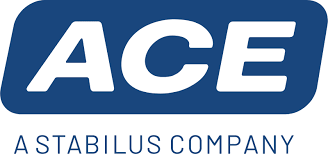ACE Stoßdämpfer GmbH
- Manufacturer
- Germany
- Website
- Webshop
- Send request
- Phone
ACE Stoßdämpfer GmbH
- Manufacturer
- Germany
- Website
- Webshop
- Send request
- Phone
- RoHS
- Reach
- DIN ISI 9001:2015

ACE Stoßdämpfer GmbH
- Manufacturer
- Germany
- Website
- Webshop
- Send request
- Phone
- RoHS
- Reach
- DIN ISI 9001:2015
25.03.2023 01:03
ACE vibration damper: train by train protected against vibrations
Autonomous driving - what is still being perfected for road traffic is already everyday practice in material transport from the warehouse to assembly. In fact, manufacturer-independent special kits for converting commercially available electric tow tractors into driverless transport systems are an innovation there, as offered by Schiller Automatisierungstechnik GmbH. The designers protect the electronics needed for the autonomous route trains from shocks and vibrations with the help of rubber-metal insulators from ACE.
A truck platoon that is 99.986% available, drives autonomously and chooses the fastest route is still a dream of the future for long-haul transport. For the autonomous transport vehicles of Schiller Automatisierungstechnik GmbH, it is reality. The company, headquartered in Osterhofen, located in the Lower Bavarian district of Deggendorf, recently successfully completed a project with 22 autonomous route trains on behalf of a major Bavarian car manufacturer. The fleet transports over 500 tons of material per working day from the warehouse to the assembly line, covering a distance of over 300 kilometers per day. During the test over 10 shifts, over 1,550 kilometers were completed autonomously with maximum availability.
Converting commercially available electric tractors into autonomous driving systems
Founded in 1985 by Ewald Schiller, Schiller Automatisierungstechnik GmbH has grown into a company with more than 240 employees in Osterhofen, Metten, Grafenau and Shenyang, China. Electrics, mechanics and IT for the fields of automation, logistics, clean room and electrical planning are among the core competencies. Schiller laid the foundation for the development of solutions for autonomous route trains in 2018. "It quickly became clear to us that safety technology would be a key issue for our driverless transport systems, because with route trains, just as with trailer operations in general, you have to consider the trailers' trackingpeter Stoiber, Head of Mobile Robotics at Schiller, explains one of the challenges during the development work. Also, in order to comply with the strict regulations of the machine guidelines, the engineer and his team had to calculate the error probability of all components and ensure maximum availability. The development work led to the perfection of an indoor GPS, with the help of which the tugger train always recognizes where it is. This means that no structural changes are necessary on the transport route for orientation. Each tugger train from Schiller can also be easily adapted to changing situations in the production process and can also be used at other locations. The biggest advantage of the solution: commercially available electric tugs can be converted into autonomously driving systems using Schiller technology.
The task: Ensuring fail-safe electronics
Even though the tugger trains can in principle still be operated by the driver after being equipped with the conversion kits, the autopilot shows its strengths day after day in everyday operations. For example, once the tugger train has arrived near the next work station, a smartwatch on the wrist of the employee responsible reports the status via a vibration alarm. The employee can then load or unload the wagons and give the signal "all actions completed, send train on". In this way, the route is continued without delay. Unnecessary travel times for personnel are eliminated. As smart as the Schiller route train is, there is one thing it cannot do yet: fly. And that was one of the last problems in the development process that Peter Stoiber, as head of the Mobile Robotics division, had to face with his team. After all, the train sometimes has to travel on uneven tracks or cross building corridors on its many different routes through the automotive plant. These are potential danger spots that jeopardize the reliability of the electronics. It was therefore necessary to prevent the control cabinet from vibrating. For this purpose, the tugger train was to be equipped with vibration dampers at the decisive points.
More News
08.12.2025 01:05
Formula Student: Better acceleration with industrial gas springsFormula Student is an international student design competition in which university teams...
How can the cycle rates in an automated car wash be increased and the maintenance interva...
Sales of high-quality portafilter machines are rising in line with coffee prices. Many pe...
ACE Stoßdämpfer GmbH is expanding its range of clamping element solutions in t...
With its new type IPR35 Smart, Stabilus is expanding the successful family of electromechanical I...
30.07.2025 01:00
Positive conclusionStabilus Group impresses trade visitors at Interzum 2025 with numerous innovations


